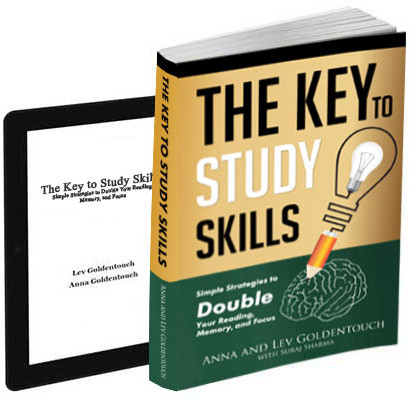It is always important to create ideas whenever one is writing an essay or a report or even when developing any other creative work. However, brainstorming assumes a different perspective when adapted to be used together with speedwriting.
When writing, it is essential that you prepare the mind before the pen takes action on paper to enable you to write at top speed. A good technique of brainstorming ensures that you are able to concentrate on the major aspects of writing, hence resulting in concise and well-ordered work.
Before you proceed with speedwriting, this article will provide you with how you can make brainstorming enjoyable and worthwhile. By choosing these methods, you may successfully organize your creative potential, minimize the time for the job, and achieve impressive results.
Why Brainstorming Matters Before Speedwriting
Effective brainstorming serves as the foundation of a successful speedwriting session. When done well, it can:
Save Time
- Clarifies your thoughts before writing.
- Helps identify key points to cover.
- Reduces time spent figuring out what to write.
Increase Focus
- Creates a clear roadmap for writing.
- Keeps you on topic and organized.
- Ensures your writing is concise.
Improve Idea Generation
- Generates a variety of ideas quickly.
- Let you expand on ideas efficiently.
- Helps capture fleeting thoughts before they slip away.
Enhance Creativity
- Activates your creative thinking.
- Encourages fresh angles and perspectives.
- Prepares you to approach writing from multiple viewpoints.
Strengthen Structure
- Organize your ideas logically.
- Helps create a cohesive flow in your writing.
- Prevents the writing from feeling disjointed or scattered.
Practical Strategies for Brainstorming Before Speedwriting
Here are some proven brainstorming strategies that will set you up for success before you even start writing.
1. Mind Mapping
Mind mapping is one of the most effective ways to visually organize your ideas. By drawing connections between key concepts and themes, you create a visual outline of your thoughts. This method allows you to quickly identify the main ideas and how they relate to each other. It’s a particularly useful strategy for organizing complex information and making sure all aspects of your topic are covered.
How to use mind mapping:
- Start with a central idea or question in the middle of the page.
- Branch out with related themes or subtopics.
- Continue to break each branch into smaller details, forming a connected structure.
- Review the map to see which points are most relevant to your writing task.
2. Freewriting
Freewriting is a technique where you write continuously for a set amount of time, allowing your ideas to flow naturally without worrying about structure or grammar. This can be an excellent way to generate a wide variety of ideas quickly.
How to use freewriting:
- Set a timer for 5-10 minutes.
- Write everything that comes to mind related to your topic, without stopping or editing.
- After the timer ends, review your writing for any valuable ideas or themes.
- Extract the most relevant points and begin organizing them into a structured outline for your speedwriting session.
3. Listing
Listing is a quick and simple brainstorming method that involves jotting down as many ideas as you can think of related to your topic. This works particularly well when you need to identify key themes, actions, or concepts that should be addressed in your writing.
How to use listing:
- Take a few minutes to write down all the ideas, words, or phrases that come to mind about your topic.
- Don’t filter or censor yourself—write everything, even if some ideas seem irrelevant.
- Once the list is complete, review it and highlight the most important points that should be developed further in your writing.
4. The 5 W’s + H
The 5 W’s + H (Who, What, Where, When, Why, and How) is a classic strategy for generating ideas and organizing information. It forces you to think about all the angles of your topic, ensuring that you cover all essential aspects.
How to use the 5 W’s + H:
- Write down the 5 W’s and H questions related to your topic.
- For each question, jot down your answers or related thoughts.
- This approach helps you develop a comprehensive understanding of your topic and prompts you to consider any gaps in your writing.
5. SWOT Analysis
A SWOT (Strengths, Weaknesses, Opportunities, Threats) analysis can be a powerful brainstorming tool when you need to evaluate a subject from different perspectives. It works well for topics that require problem-solving, decision-making, or strategic planning.
How to use SWOT analysis:
- Divide a piece of paper into four sections: Strengths, Weaknesses, Opportunities, and Threats.
- List all the factors related to your topic under each category.
- This analysis provides you with a clear overview of the subject and can help you identify key points to emphasize in your speedwriting.
Tips for Streamlining Your Brainstorming Process
1. Set a Time Limit
Brainstorming should be a focused, time-limited activity. If you allow yourself too much time, you might become overwhelmed or lose momentum. Set a timer for 10-15 minutes, and stick to it.
2. Eliminate Distractions
Find a quiet, comfortable space to brainstorm, free from distractions. Whether you’re working on your laptop or using pen and paper, make sure you’re not interrupted during this creative process.
3. Start Broad, Then Narrow Down
When brainstorming, start with broad ideas, then narrow them down to the most relevant or important ones. This allows you to consider all possible angles before deciding which approach is best.
4. Combine Methods
Feel free to combine different brainstorming methods. For example, you might start with a mind map to explore your ideas, then use freewriting to dive deeper into the most interesting or promising topics.
5. Prioritize the Key Ideas
Once your brainstorming session is over, prioritize the ideas that are most relevant to your writing task. You’ll want to focus on these points when you begin your speedwriting.
Speedwriting: Analyze 1000 Articles Every Weekend
One of the key concepts in Speedwriting is the integration of brainstorming and speedwriting. The book reveals how combining strategic brainstorming with speedwriting techniques can not only increase your writing speed but also improve the quality of your work.
The book’s core principles focus on effective time management, maximizing creative output, and eliminating common barriers to productivity. Its detailed approach teaches readers how to structure their thoughts quickly and efficiently, leading to faster and more effective writing sessions.
Applications of Brainstorming for Speedwriting
1. Academic Writing
In the academic context, brainstorming may be used in order to sort out the information gathered and choose the thesis statement and proofs. By brainstorming, you avoid weaker and irrelevant arguments, and your assertions would be sound empirical evidence.
2. Business Reports and Proposals
Brainstorming is best practiced when writing reports and proposals because it assists in outlining the objectives of the report, the important points necessary, and the flow of the report. Idea-mapping before writing prevents your report from being superficially or protractedly long.
3. Creative Writing
Novelists, short story writers, and scriptwriters use brainstorming as a tool to get ideas on characters, plots, and locales. The strategies that may be used in brainstorming will assist you in overcoming writer’s block and thinking continuously.
4. Blogging and Content Creation
Outlining for blogging or any web content prewriting session also enables you to define the overall purpose/slogan, the mood, and the writing plan. It also helps you make sure that your content is in tune with your target market.
To Wrap Up
Brainstorming before speedwriting is an essential step that shouldn’t be overlooked. By employing practical strategies like mind mapping, freewriting, listing, and SWOT analysis, you can generate ideas quickly and efficiently, ensuring that your writing process is smooth and productive.
These strategies not only improve the quality of your writing but also save you valuable time, allowing you to focus on creating meaningful, well-structured content.
For even more insights into how to boost your brainstorming, writing speed, and productivity, be sure to check out Analyze 1000 Articles Every Weekend. The book offers a comprehensive guide to mastering speedwriting and achieving your writing goals faster and more effectively.

Get 4 Free Sample Chapters of the Key To Study Book
Get access to advanced training, and a selection of free apps to train your reading speed and visual memory
